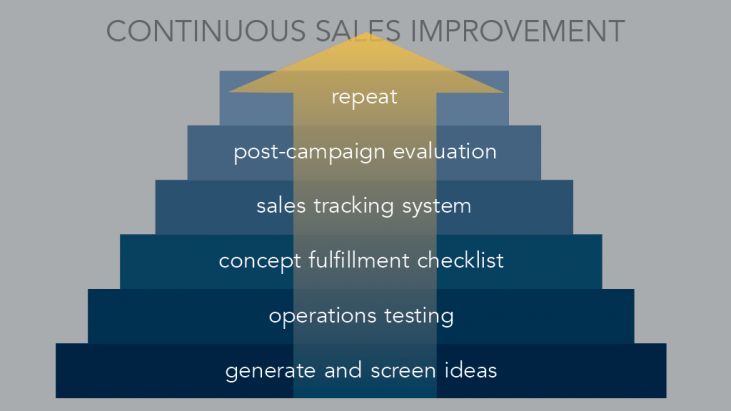It’s not sexy, but if you want to improve sales results and deepen customer relationships (and retain them over time), do the heavy lifting up front to develop a system.
Marketing and sales leaders (and their staffs) of most organizations – from banking to manufacturing to retail and even to professional services – can benefit many times over from developing a step-by-step process to manage the marketing process.
The kind of marketing systems that we’d recommend can be documented, support testing and allow performance results (and the reasons for them) to be archived and referenced and applied for future use and continuous improvement.
True, developing such a defined process for continuous sales growth as S.O.P. may appear to be unending. It is. But consider this:
Goals will continue to be set higher, internal operating methods will evolve, and the markets for your products are in constant change. SO, if your systems, methods and procedures for deepening customer relationships are not governed by processes explicitly designed to deliver market improvements cycle-over-cycle, opportunities are being lost and windows are left open for competitors to exploit.
Rather than viewing developing a system as a burden, organizations can utilize the power of the process to continuously improve methods and do better cycle over cycle.
Many factors will determine the methods you select, yet they absolutely must include the following 6 key elements (actually 5 and a bonus step).
- Generate and Screen ideas. This is the time when all ideas for a product, promotion or integrated marketing campaign are on the table to be hashed out, evaluated for fit and feasibility. Then, separately narrow these down to a smaller handful that might really work.
- Operations testing. Walk-through the selected program or campaign with staff, vendors or others who would be involved in the rollout to identify and troubleshoot any anticipated problems before execution.
- Concept fulfillment checklist. A comprehensive list of goals, targets, strategy and the methods developed to meet goals.
- Sales tracking system. So results may be referenced for campaign evaluation and future comparisons. The best methods are standardized and diagnostic, revealing the reasons for the performance result.
- Post-evaluation. Review campaign or program results and decide the best path forward
- Repeat. Applying what’s been learned.
Your sales improvement process doesn’t have to be fancy or complicated, but the process is made smoother when you just trust an appropriately designed system.
